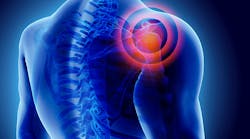I hobbled into the office this morning, leaning on an old wooden cane I only break out for knee emergencies. I’m no good at cane walking in general, and all this lingering snow and ice made my three-block walk into the office a hilariously awkward expedition. But I needed it.
I’m not really that old yet—nowhere near an age when a cane should be appropriate. I’m still (barely) under 40, still at a generally healthy weight for my height. My body should still work; I should be training for mid-life marathons, waging extreme home-improvement projects every weekend.
But instead I’m stuck here limping through the snow.
The worst part is that I don’t even have a good story to go along with this. My body doesn’t hurt from some amazing skateboard fail or overblown sports heroics. I wasn’t involved in any dramatic accidents, I haven’t endured any major illness.
No, I’ve just spent my life working like an idiot.
When I was 12, I got my first steady job shoveling coal into a relative’s house. Three tons, twice a month, all winter—every shovelful hefted fully with my back. I remember it would seize up so severely that I'd get stuck mid-job hunched over at a 90 deg angle. I'd have to jump off the truck, take off my sweater, and lay in the snow until it let up. Or, more often, just keep working at a 90 deg angle until I finished.
Later at a construction job in college, I shattered my big toe by dropping an entire wall on an unprotected foot. Because it was hot and the steel-toe boots were heavy.
Between those experiences, I fell off roofs and ladders, received third-degree burns in industrial ovens, I filled my arms with permanent metal shavings by cutting fixtures in short sleeves, I dislocated shoulders, and I destroyed my knees by always carrying more than my bones could take and never doing anything about the injuries.
I did all this for sake of efficiency, of course. I needed to get the work done as fast as possible, and ergonomics, PPE, and common sense all just slowed me down. And besides, I was young; my body would heal. No point in telling my boss about an accident, no point in resting until it healed. Just grab the overtime and limp ‘til the pain stops.
And now, here I am: under 40 with 60-year-old knees, tripping over my own cane on East 9th.
It’s in this light—and in this discomfort—that I first went through John Hitch’s latest piece, "Exo Strategy: Preventing Pain Points with Exoskeletons."
There’s a big part of me that is excited for the potential of these exoskeletons as a solution for my current state. Power-assisted knee braces that let me march around surefooted again? Back supports that let me powerlift bookcases at home? Sign me up!
There is equal excitement for these things out in the plants as well. They provide workers—whose bodies have endured more stress and who regularly overcome far more aches and pains than I while not being nearly such an idiot—a tool to regain their former power and productivity. It’s an absolutely essential innovation for a generation of workers who are staying in the field far longer than any before.
But this excitement is missing at least half of the point.
The real potential here isn’t to get me off my dumb cane, it isn’t to help workers overcome decades of strains and sprains—it’s to prevent these injuries from occurring in the first place.
That’s the part that will change the world: a new generation of workers who can work longer, do more, and not suffer as a result. These devices are designed to prevent idiots like me from ignoring safety protocols and ergonomic guidelines, to keep backs straight and knees strong no matter how hard you work them, to serve the ultimate objective of all safety gear: bringing us home safe and healthy at the end of the day.
And that is what I’m hoping the industry really signs up for.
